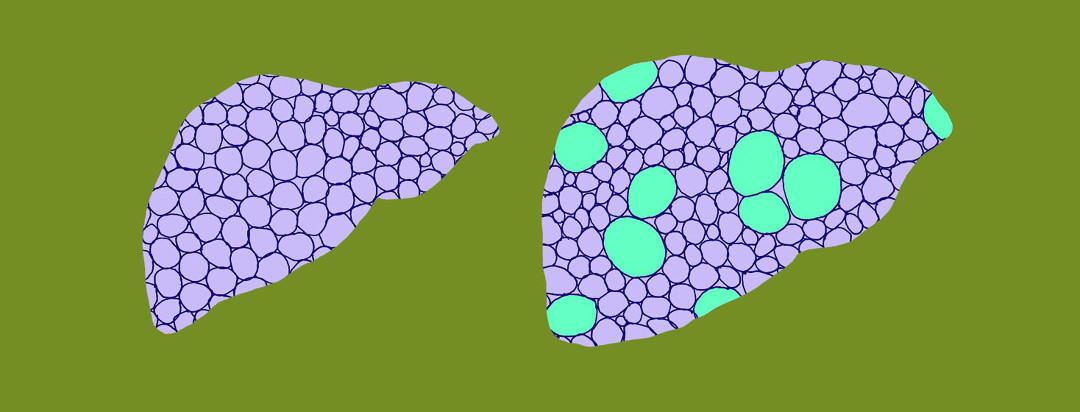Fatty Liver and Hep C
Non-alcoholic fatty liver disease, also called NAFLD, is the buildup of fat in the liver. NAFLD is the most common liver condition in the United States; As obesity and diabetes rates increase, so does the prevalence of NAFLD. In fact, up to 46% of people in the United States have NAFLD.1 Furthermore, people with hepatitis C may also have NAFLD.
Types of NAFLD
NAFLD is divided into two types, based on the presence of inflammation:
- Non-alcoholic fatty liver (NAFL) - NAFL is the less severe form involving fatty deposits in the liver but no inflammation. People with NAFL usually have no symptoms, and the liver functions normally. Most of these people never go on to develop NASH, the more severe form of NAFLD.
- Non-alcoholic steatohepatitis (NASH) - NASH is characterized by fatty deposits in the liver along with liver inflammation, which leads to scar tissue. Alcohol is not implicated in the development of NASH, as people diagnosed with NASH rarely consume alcohol. Like NAFL, NASH usually has no symptoms.
NAFLD in people with hep C
It is estimated that 18% of NASH and hepatitis C patients have the two conditions at the same time.2 Hepatitis C patients with genotype 3 and those who carry more weight in the abdomen are more likely than other hepatitis C patients to also be diagnosed with NASH. People with both NASH and hepatitis C have a higher degree of fatty deposits and more advanced hardening and scarring of the liver than those with either condition alone.2
Management of NAFLD
There is no cure for NAFLD; focus is usually on reducing risk factors for heart disease and protecting the liver by immunization and avoidance of alcohol. Additional management includes:
- Weight loss - Weight loss is the primary means to manage NAFLD in people who are overweight. Weight loss has been shown to improve liver function, insulin levels, and quality of life.3 The goal for people who are overweight is to lose 5-7% of their body weight; For people with NASH, the goal is even higher at 7-10%.
- Bariatric surgery - People with NASH or advanced fibrosis may be qualify for bariatric surgery if their weight loss target is not met within 6 months of lifestyle modifications.
- Medications - There are no direct medications that target NAFLD. Some medications used include those for type 2 diabetes or vitamin E supplementation. Medications are usually reserved for people with NASH.
Liver cancer risk
People with cirrhosis as a result of NASH are monitored regularly for hepatocellular carcinoma (HCC). HCC is the most common type of liver cancer. The risk of HCC is highest in people with cirrhosis compared to people who don’t have cirrhosis. One study found that the risk of HCC was as high as 12.8% among people with cirrhosis, in contrast to only 3% in those without cirrhosis.4
Unlike hepatitis C, there is no cure for NAFLD. However, with the appropriate lifestyle modifications and drug therapy if appropriate, NAFLD can be managed effectively.

Join the conversation